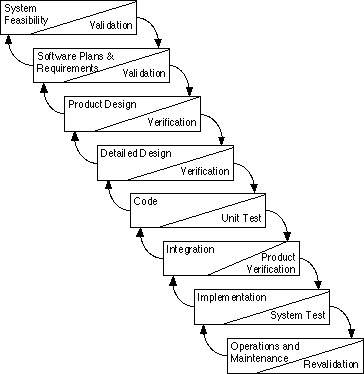
| Feasibility: | Defining a preferred concept for the software product, and determining its life-cycle feasibility and superiority to alternative concepts. |
| Requirements: | A complete, verified specification of the required functions, interfaces, and performance for the software product. |
| Product Design: | A complete verified specification of the overall hardware-software architecture, control structure, and data structure for the product, along with such other necessary components as draft user's manuals and test plans. |
| Detailed Design: | A complete verified specification of the control structure, data structure, interface relations, sizing, key algorithms, and assumptions of each program component. |
| Coding: | A complete, verified set of program components. |
| Integration: | A properly function software product composed of the software components. |
| Implementation: | A fully functioning operational hardware-software system, including such objectives as program and data conversion, installation, and training. |
| Maintenance: | A fully functioning update of the hardware-software system repeated for each update. |
| Phaseout: | A clean transition of the functions performed by the product to its successors. |